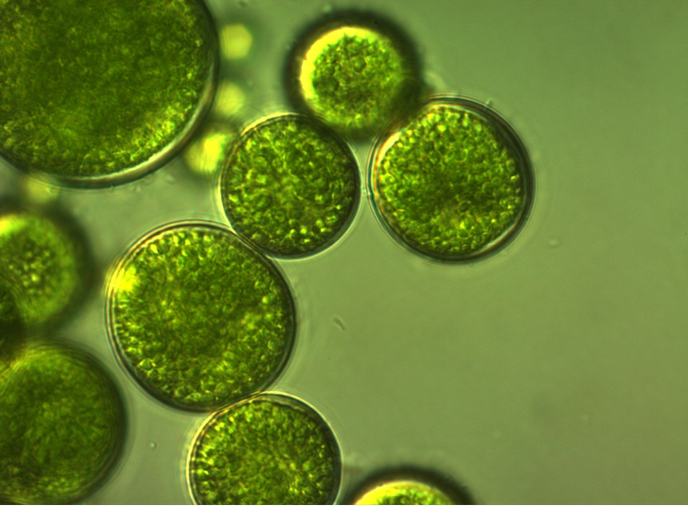Algae biomass: unlocking new uses as food, feed and fuel
SOLENALGAE (Improving photosynthetic solar energy conversion in microalgal cultures for the production of biofuels and high value products), a project funded by the European Research Council (ERC), investigated how biomass production in microalgae could be improved by making the process of light energy conversion to biomass more efficient. “As photosynthetic organisms, microalgae hold great potential for producing sustainable biomass: unlike other sources of biomass, they do not compete with food crops for arable soils. Moreover, they absorb CO2, thereby reducing carbon emissions, as well as nutrients from wastewater,” explains Matteo Ballottari, associate professor of Plant Physiology at the University of Verona and SOLENALGAE principal investigator. To make full use of this potential, however, the productivity of the algae’s photosynthetic process needs a boost. The microalgae’s light-to-biomass conversion mechanism, naturally evolved to enable them to survive, does not yield enough biomass to enable industrial applications. The SOLENALGAE team set out to analyse the molecular basis of the photosynthetic process and tested different strategies to overcome its limitations. They successfully engineered microalgae strains with improved photosynthetic efficiency, triggering a 30 % increase in biomass productivity.
Benefits for human health
The researchers also discovered how to produce one of the strongest antioxidant molecules found in nature. They developed a novel process (which was the focus of the earlier ERC-funded Proof of Concept (PoC) ASTAOMEGA project) that is currently being patented, for the production of astaxanthin and omega-3 in marine algae. ”Astaxanthin is a molecule in high demand on the market, especially for animal feed or as a nutraceutical for humans, with an estimated price of thousands of euros per kilogram,” says Ballottari. “This means that microalgae could be used at industrial scale using sustainable processes to produce novel foods and high-value products for human health, such as antioxidants, omega-3 or even drugs and vaccines.” Further steps required to make this happen will involve the development of industrial procedures for the cultivation of these organisms where expenditure is high. There is sufficient incentive to get there, Ballottari notes: “Increased biomass and lipid productivity and the development of high-value products like astaxanthin, obtained during this project, will contribute to reducing the imbalance between costs and market value of microalgae applications.”
New hope for ‘green’ biofuels
Potential applications for the production of biofuels are another important aspect of SOLENALGAE. In addition to improved biomass productivity, the project team was able to develop strains of marine algae with an increase of up to 80 % in lipids, a macromolecule which is key to biofuel production. They also proposed a novel process for reducing the cost of microalgae cultivation by recycling nutrients in waste waters, further increasing lipid productivity. Ballottari cautions, however, that biofuels production remains the most challenging application for microalgae: “It is worth noting that the sustainability of microalgae-based biofuels production still requires further work, combining novel biotechnological applications and smart engineering process design.” Looking ahead, Ballottari says the team is now close to bringing their technology to the market. Negotiations between the University of Verona and several private companies are currently underway with a view to launching a dedicated start-up. To fully explore the potential of microalgae as biomass and biofuel, he is also looking to further develop international cooperation on this topic: “The ERC funds allowed me to establish a solid scientific network with other labs in Europe, the United States and Asia. My plan is to reinforce these collaborations to conduct high-level scientific research, focusing in particular on the development of microalgae as novel foods for sustainable and healthy human nutrition.”
Keywords
SOLENALGAE, microalgae, biofuels, biomass, antioxidant, astaxanthin, nutraceutical, novel foods, high-value products







